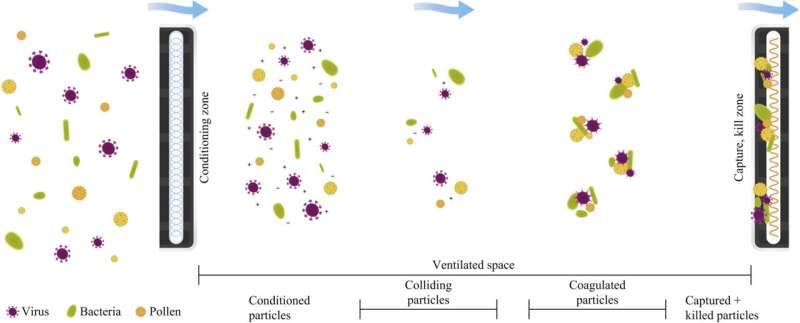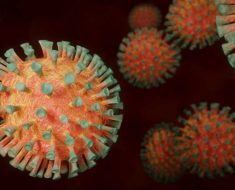
A new scientific study published this month in the Journal of Hospital Infection finds cutting-edge air purification technology installed at St. Mary’s Hospital for Children reduced healthcare-associated infections (HAIs) including COVID by 45 percent. The study, which took place over a three-year period and was already underway when the COVID-19 pandemic hit, is thought to be the first of its kind, examining the impact of advanced air purification technology in a real-world hospital setting.
The study results provide a window into the significant advances that could be made in reducing the transmission of airborne viruses and bacteria in hospitals. According to the Centers for Disease Control and Prevention (CDC), HAIs account for an estimated 1.7 million infections and 99,000 associated deaths each year. Beyond hospitals, the findings point to a proven solution for reducing the spread of COVID-19 in other indoor settings such as schools, restaurants and commercial office buildings where the risk of transmitting the virus is the highest.
“At a time when the FDA and healthcare professionals are demanding real world evidence and with the pandemic as a backdrop, we’re very proud to have been able to conduct and publish these real-world results on the impact of this technology in disinfecting breathing zone air,” said Judith Fine, MSc, MPH, Director of Infection Control for St. Mary’s.
“This progress reflects the extraordinary commitment from our entire staff and their desire for comprehensive infection control” said Dr. Edwin Simpser, President and CEO, St. Mary’s Healthcare System for Children.
The study was conducted over 30 months with over 100,000 patient-days. Following implementation of advanced air purification technology, HAIs at St. Mary’s went from an average of 11.9/1,000 patient-days to an average of 6.6/1000 patient-days—a 45 percent reduction. Wound infections were found to fall by 63 percent and tracheal infections by 89 percent. When COVID-19 mitigation measures were added early in the pandemic, infections dropped another 47 percent.
These results were made possible with the rooftop, facility-wide installation of Active Particle Control technology from SecureAire. Current air purification technology, including HEPA filters, fail to eliminate most particles less than three microns from the breathing zone space. COVID-19, other viruses, bacteria, fungi, and volatile organic compounds (VOCs) are all smaller than three microns and are not affected by air flow. Active Particle Control technology uses charged particles to force contaminants less than three microns to cluster together, increasing their size and mass, making them susceptible to air flow. These larger conglomerations of particles are then moved to the Active Particle Control filter, where they are inactivated and destroyed.
Mark Ereth, MD, Emeritus Professor, Mayo Clinic College of Medicine, and Chief Medical Officer, SecureAire Technologies, LLC, stated: “Eliminating hospital associated infections is a top priority for healthcare systems and federal regulators. This critical breakthrough in air purification represents an unobtrusive, affordable engineering solution for hospitals and other care facilities to consider when working to protect their patients, visitors and staff. HEPA technology may have been sufficient in 1945, but it no longer meets the needs of hospitals in the 21st century. This innovation is long overdue and now has demonstrated its effectiveness in the first real-world trial in history.”
Source: Read Full Article





